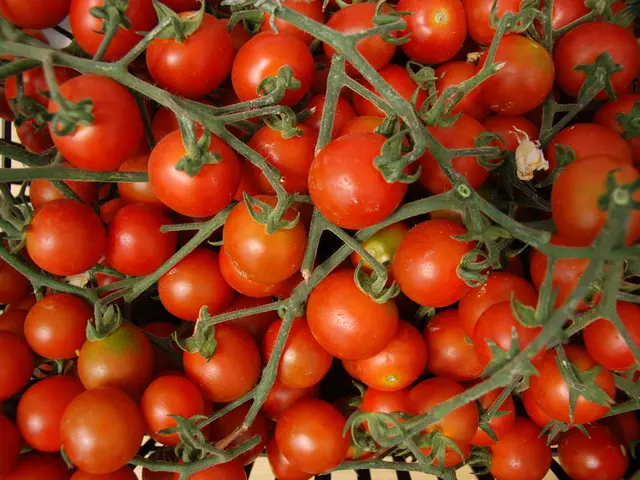Growing Your Own Long-Cane Raspberries
Guidelines for Growing Tall Raspberry Plant Varieties
Craving the sweet taste of fresh raspberries? Growing long-cane raspberries from bare-root plants can be both rewarding and efficient. Here's a simple guide to help you plant and support these delightful berries.
Gather Your Supplies
- Bare-Root Long-Cane Raspberries: These are readily available by spring.
- Garden Tools (Spade, Secateurs): For digging and pruning.
- Organic Fertilizers (Compost, Mulch): To enrich the soil.
- Trellis or Support System (Fencing, Wire, Strings): For training the canes.
- Mycorrhizal Fungi: Optional, aids root growth.
Find the Right Spot
- Look for a sunny, well-draining location to host your raspberry patch. Loamy soil works best, staying away from heavy clay as it may cause root rot.
Prepare the Soil
- Dig the soil to let in air and loosen it up. Incorporate your choice of organic fertilizer, such as compost or well-rotted manure, and sprinkle a little sulphate of potash.
- For clay soil, add extra organic matter or create raised garden beds for better drainage.
Erect the Support System
- Install a trellis or fence along the row, setting posts at a depth of 75cm with 5m between each post.
- Attach wire between the posts, keeping a 60cm distance, and secure the system with tensioners.
Treat the Roots
- If available, use mycorrhizal fungi to enhance root establishment. Dip the bare roots in the solution before planting.
- Trim each root, removing any damaged or non-essential sections, leaving just enough for planting.
Plant and Secure the Canes
- Position the plants 45cm apart along the row, digging holes adjacent to the lowest wire.
- Plant the canes 15-20cm deep, making sure the roots are covered but not too deep. Water the plants well and secure each cane onto the wire with soft string or twine.
And there you have it! Enjoy watching your long-cane raspberries grow on their new home while anticipating the tasteful harvest. For optimal growth, continue watering regularly, provide mulch to keep the soil moist, and prune the canes as they mature. Happy gardening!
Sources:
- "Raspberries". HGIC (Home & Garden Information Center at Clemson University). https://hgic.clemson.edu/factsheet/raspberries/
- "How to Grow Raspberries". Gardener's Path. https://www.gardensalive.com/garden-how-to/berries/how-to-grow-raspberries.html
- "Raspberries". University of California Agriculture and Natural Resources. https://ucanr.edu/sites/UCRBargain es/Raspberries/
- "Planting and Caring for Raspberries". Mr. Fothergill's Seeds. https://www.mr-fothergills.com/grow/how-to-grow/raspberries/
- "Raspberries". University of Missouri Extension. https://extension.missouri.edu/publications/g4290
Incorporate long-cane raspberries into your home-and-garden lifestyle by growing them from bare-root plants. To establish a successful home-gardening project, consider implementing a support system such as trellis or fencing to effectively train the long canes.







